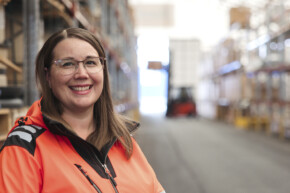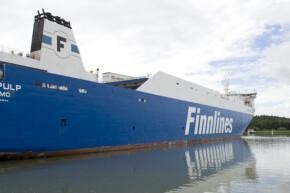LNG bunkering now available in Turku
Viking Grace and Viking Glory now fill their LNG tanks in Turku. The newcomer in the Port, Gasum’s bunkering vessel is ready to serve other LNG-powered ships as well.
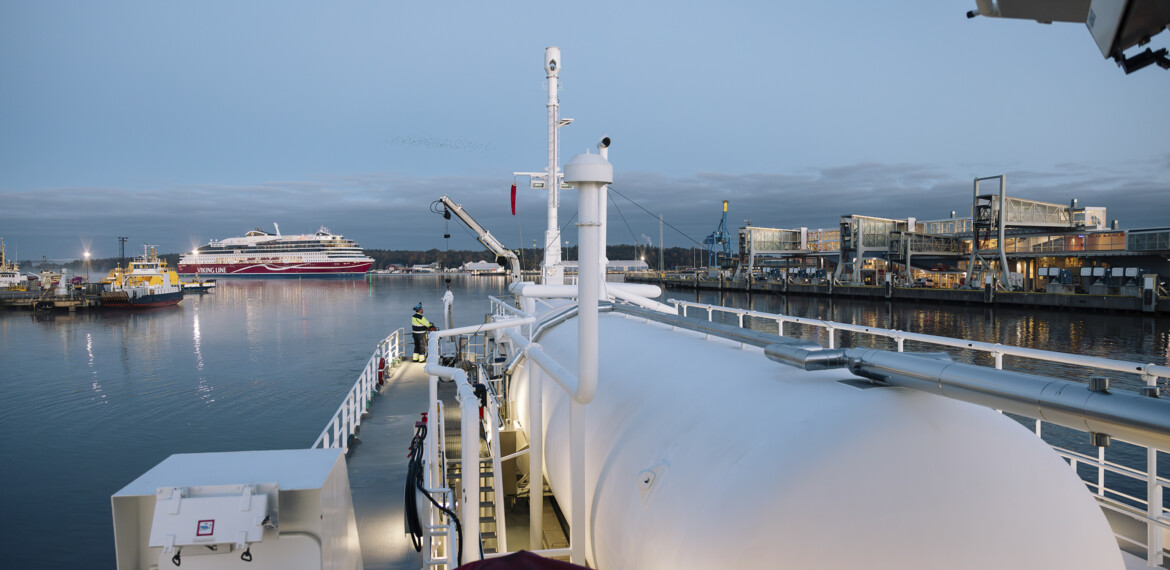
Viking Glory has arrived in Turku. During around 45 minutes the passengers disembark the ship and new ones embark. Cargo is unloaded and new cargo is loaded.
At the same time, something is happening next to the side of the ship facing the river. Gasum’s vessel Seagas has made its way next to Viking Glory’s bunkering gate. The hose is in place and LNG, or liquefied natural gas, flows into the ship’s tanks.
Bunkering, known to landlubbers as fuelling, proceeds safely and efficiently. Viking Glory again departs on schedule towards Stockholm.
Seagas has served Viking Line’s LNG-powered ships in Turku since May. Previously the vessel operated in Stockholm.
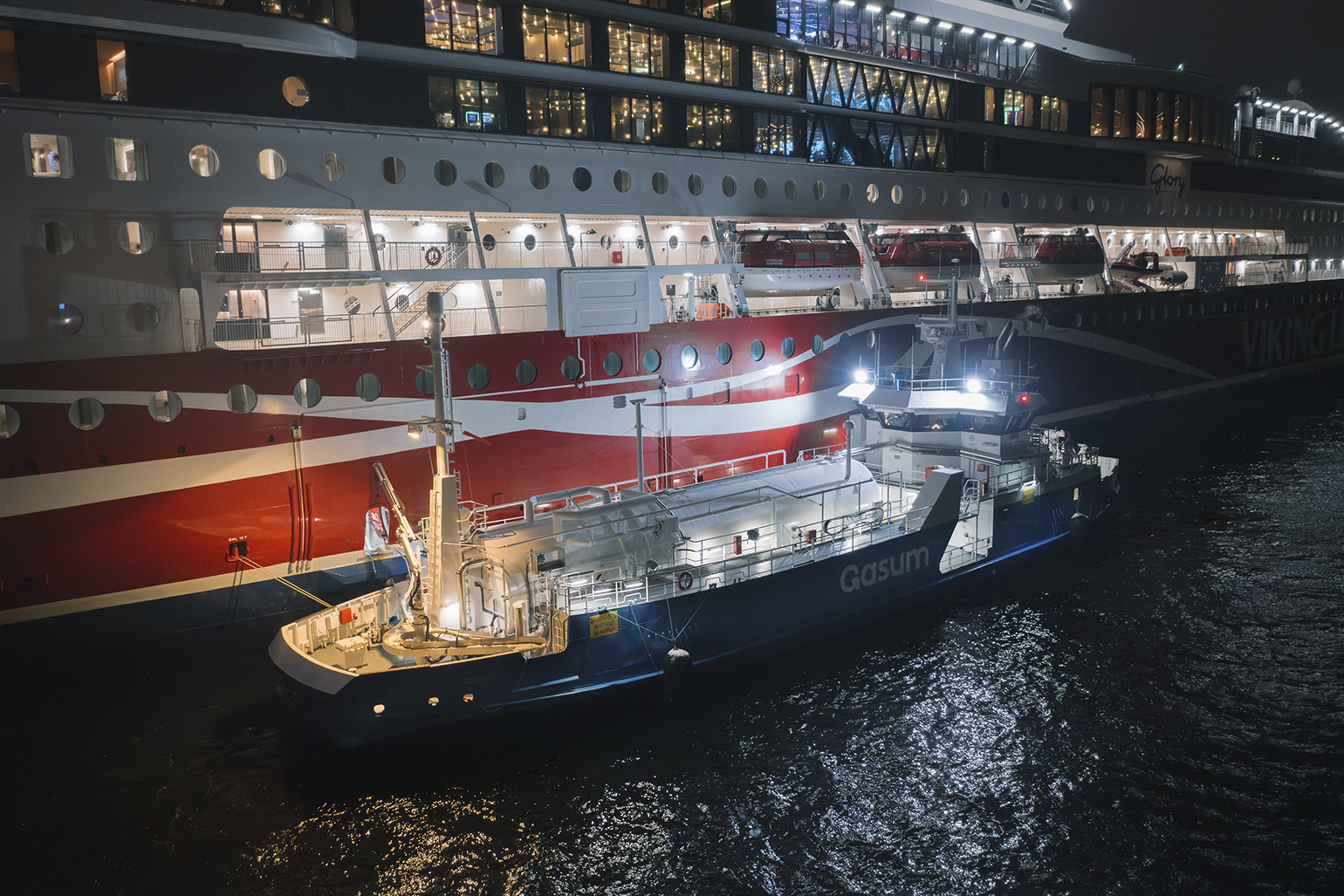
Other LNG ships can also come to Turku
Jacob Granqvist, Vice President, Maritime at Gasum, says that Viking Line is among the pioneers of LNG users.
“Seagas may also attract other LNG-powered ships to Turku. Among new ships the share of LNG ships is continuously growing.”
Gasum transports the LNG to Turku by tank trucks from its terminal in Tahkoluoto, Pori to where it is imported e.g. from Norway. The company no longer uses Russian LNG.
“The natural gas is refrigerated to around -160 degrees. At that temperature it is liquefied and takes a lot less space than in gaseous form”, Mr Granqvist explains.
Local emissions decrease
Mr Granqvist reminds that LNG produces around a quarter less carbon dioxide emissions compared to traditional fuel oil used in ships. It is also significant that LNG easily meets the tight emission criteria concerning nitrogen oxides, sulphur dioxide and particulates.
“LNG helps to decrease local emissions and improve the air quality. That is particularly important in places like Turku where the port is located in the middle of the city.”
According to Mr Granqvist, LNG has one more special advantage the importance of which is emphasised in the Baltic Sea:
“If an oil leak were to take place in the Archipelago Sea with thousands of islands, the situation could become extremely serious very quickly. If LNG were released to the environment for some reason, it would mean much less trouble. LNG evaporates by itself. It does not contaminate the water, islands, animals or vegetation.”
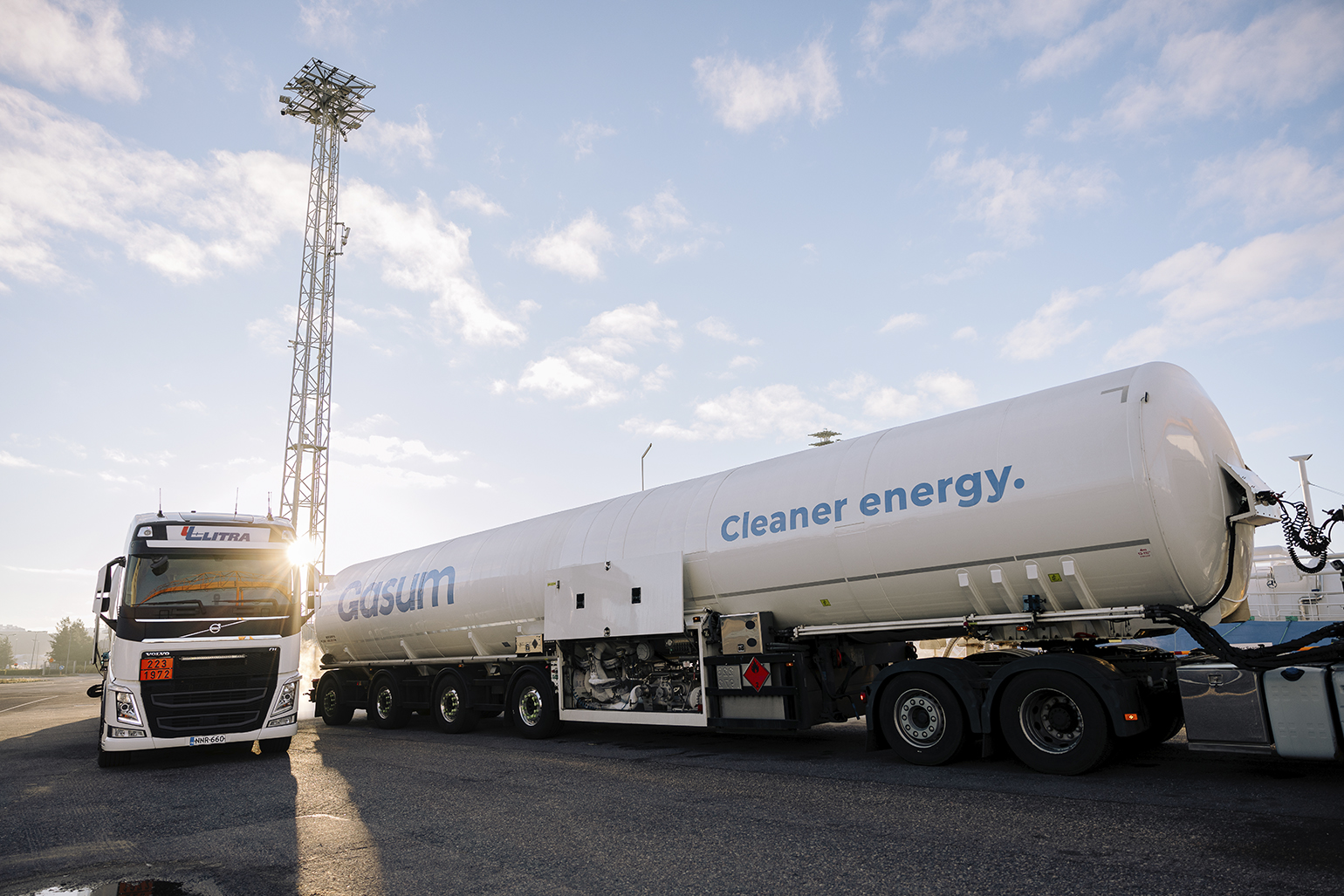
LNG can be replaced with renewable biogas
In addition to LNG, the LNG-powered ships can used renewable gases i.e. biogas LBG and new synthetic fuels which can be produced as part of the hydrogen economy. Seagas is able to bunker ship with all of them.
“LNG is the path to the future. It enables the transition to renewable fuels”, Mr Granqvist sums up.
LBG, which is also produced e.g. at the Turku biogas plant from waste water sludge, is already being used in bunkering of ships. LNG and LBG are in practice the same substance: methane.
According to Gasum, the lifecycle carbon dioxide emissions of LBG are on average 90 per cent lower compared to traditional fossil fuels, such as fuel oil. Viking Line is already offering the passengers and cargo carriers a chance to buy the volume of biogas consumed by their voyage or cargo shipment.
“LBG is readily available. Hopefully more and more operators will make use of the LBG option, too”, Mr Granqvist points out.
Text: Matti Välimäki
Photos: Ilari Välimäki & Gasum

